ART CITIES:Paris Openings
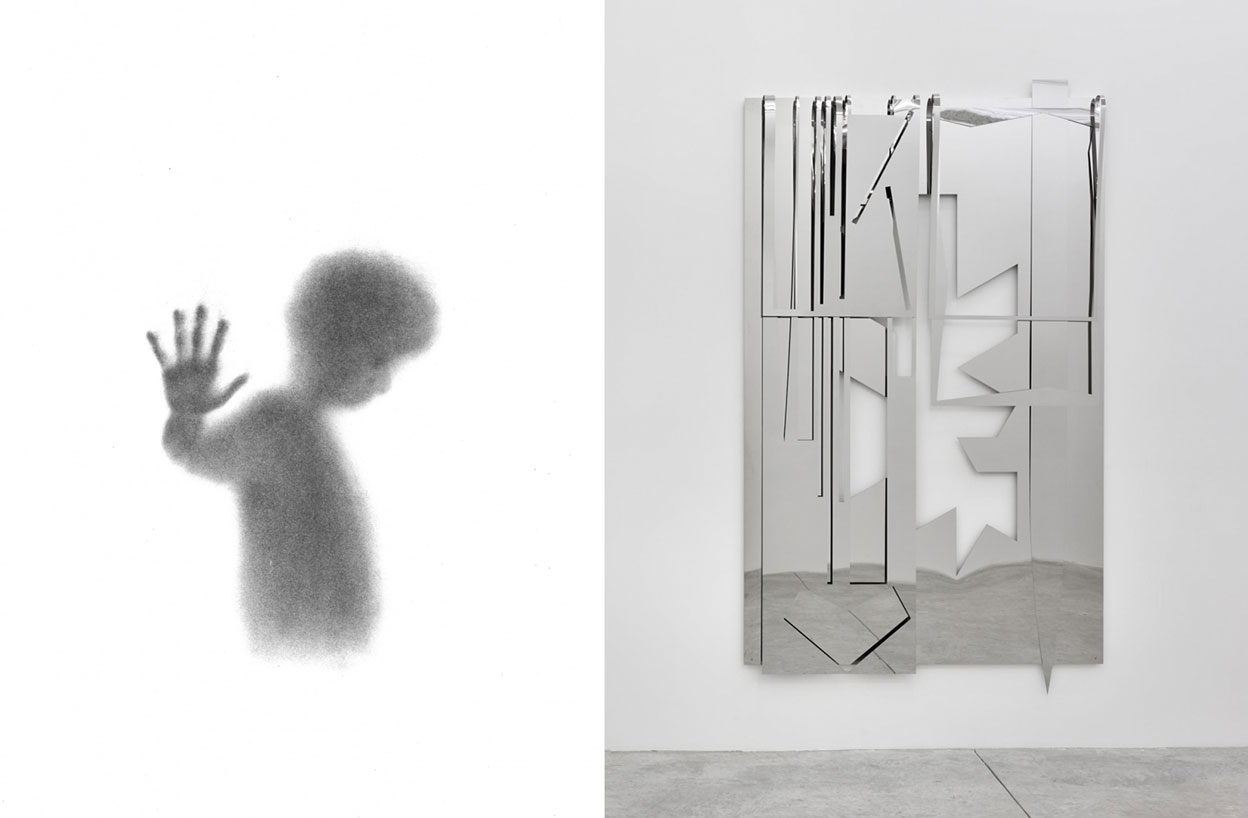 Swiss Psychologist Jean Piaget (1896-1980) advanced a theory for child cognitive development marked by four stages. Around age 12, in the final stage, children gain the capability for abstract thinking. This moment of development is a central preoccupation of artist Tarik Kiswanson, whose most recent work extends his reflection on his own coming of age as a first-generation immigrant in Sweden through an engagement with adolescents who share similar experiences of social alienation and adaptation. Titled “Vessels” this exhibition, is an immersive installation of new wall works, drawings, and a new film titled “The Reading Room”. The first room of the exhibition contains “Conductive Bodies” (2019) a new process-oriented series of abstract wall-hung sculptures made from incising clothing pattern-like forms from copper sheets and connecting sharp cut out forms with thin thread to create abstract shapes held by precarious tension. In these works, the artist takes an intuitive approach to materials, creating cocoon-like forms that hold and charge its own negative spaces. There is a second series of wall works titled “Passings” (2019), which were developed during his recent performance, “Dust” (2019) at Centre Pompidou, for which he produced unique textiles out of radiological scans of 300-year-old traditional Arabic dresses loaned from the Tiraz Foundation in Jordan, overlaid with clothing belonging to his young performers. Info: Almine Rech, 64 Rue de Turenne, Paris, Duration: 7/9-5/10/19, Days & Hours: Tue-Sat 11:00-19:00, www.alminerech.com
Swiss Psychologist Jean Piaget (1896-1980) advanced a theory for child cognitive development marked by four stages. Around age 12, in the final stage, children gain the capability for abstract thinking. This moment of development is a central preoccupation of artist Tarik Kiswanson, whose most recent work extends his reflection on his own coming of age as a first-generation immigrant in Sweden through an engagement with adolescents who share similar experiences of social alienation and adaptation. Titled “Vessels” this exhibition, is an immersive installation of new wall works, drawings, and a new film titled “The Reading Room”. The first room of the exhibition contains “Conductive Bodies” (2019) a new process-oriented series of abstract wall-hung sculptures made from incising clothing pattern-like forms from copper sheets and connecting sharp cut out forms with thin thread to create abstract shapes held by precarious tension. In these works, the artist takes an intuitive approach to materials, creating cocoon-like forms that hold and charge its own negative spaces. There is a second series of wall works titled “Passings” (2019), which were developed during his recent performance, “Dust” (2019) at Centre Pompidou, for which he produced unique textiles out of radiological scans of 300-year-old traditional Arabic dresses loaned from the Tiraz Foundation in Jordan, overlaid with clothing belonging to his young performers. Info: Almine Rech, 64 Rue de Turenne, Paris, Duration: 7/9-5/10/19, Days & Hours: Tue-Sat 11:00-19:00, www.alminerech.com
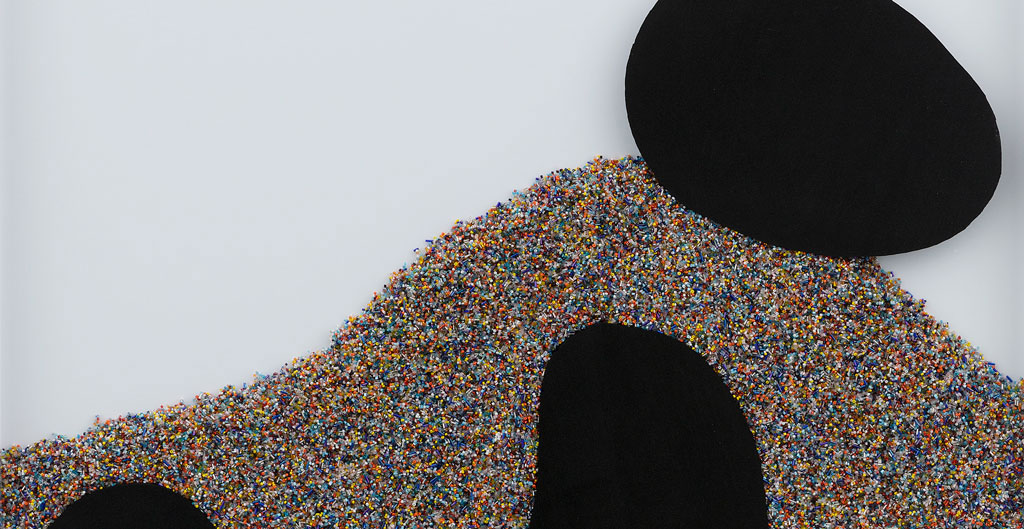 For his solo exhibition “Chemical Landscape”, Lionel Estève once more relies on frames, making use of them as an object that constitutes a work of art. What is shown seems to be accidental, temporary, unstable, open to revision if the work is moved. Strangely, a work of art has become an object in motion. These constructions question the definition of a work of art as something permanent, controlled, chosen. Here it is a sign of movement, a balance that forms a risky image and could have been quite different. In addition to these frames, other forms of accidental construction are exhibited. As with the frames, the energy at work here is gravity, but in the form of the force of attraction, of coagulation. Thus, the same materials found in the studio agglutinate and freeze to form large chunks. The exhibition as a whole evokes a strange museum of natural history that is mainly composed of artificial materials. A unique collection of works that collapse as though disrupted by a storm and cheerful chemical minerals, like a report on the current climate. Info: Perrotin Gallery, 76 rue de Turenne, Paris, Duration: 7-21/9/19, Days & Hours: Mon-Fri 11:00-19:00, www.perrotin.com
For his solo exhibition “Chemical Landscape”, Lionel Estève once more relies on frames, making use of them as an object that constitutes a work of art. What is shown seems to be accidental, temporary, unstable, open to revision if the work is moved. Strangely, a work of art has become an object in motion. These constructions question the definition of a work of art as something permanent, controlled, chosen. Here it is a sign of movement, a balance that forms a risky image and could have been quite different. In addition to these frames, other forms of accidental construction are exhibited. As with the frames, the energy at work here is gravity, but in the form of the force of attraction, of coagulation. Thus, the same materials found in the studio agglutinate and freeze to form large chunks. The exhibition as a whole evokes a strange museum of natural history that is mainly composed of artificial materials. A unique collection of works that collapse as though disrupted by a storm and cheerful chemical minerals, like a report on the current climate. Info: Perrotin Gallery, 76 rue de Turenne, Paris, Duration: 7-21/9/19, Days & Hours: Mon-Fri 11:00-19:00, www.perrotin.com
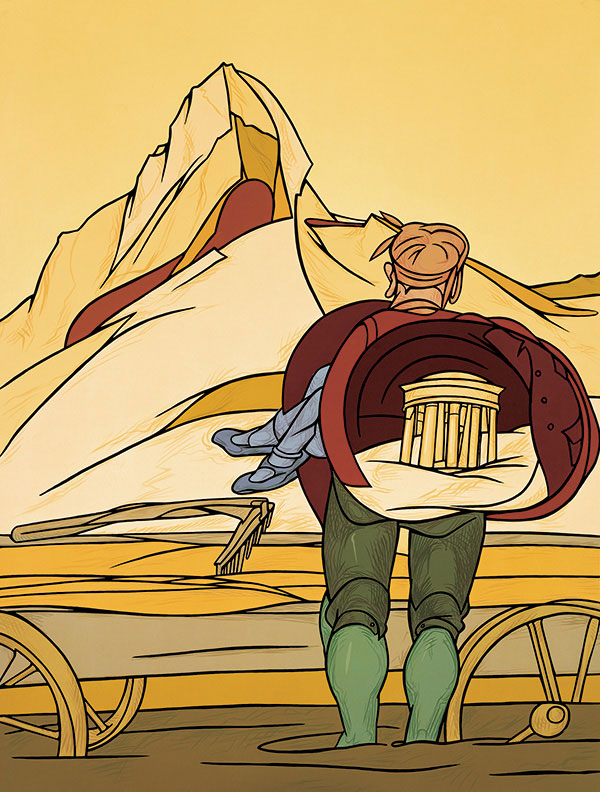 By exhibiting a curated selection of Valerio Adami’s works from the 1980s in “Les années 80” Galerie Templon is shedding new light on a time that saw the artist flourish and find his singular and unique style. This period of the artist’s career was marked by numerous public commissions and exhibitions. This is when he created the stained-glass windows for the Hôtel de Ville in Vitry and the murals at the Théâtre du Châtelet then Gare d’Austerlitz. He was Invited by Dominique Bozo to the Pompidou Centre in Paris for a solo exhibition curated by Alfred Pacquement. It was also the period when Valerio Adami freed himself from contemporary diktats and delved into the East, particularly India, which he visited on three occasions. However, like many other great painters of his generation, such as Francesco Clemente and Georg Baselitz, his craft is firmly rooted in the classic western tradition he belongs to, using it as the departure point for his creation of timeless, deeply modern work. Valerio Adami trained in the traditional style of neo-classical drawing at the Brera Academy before a lifechanging encounter at the tender age of 16: Oscar Kokoschka, taught him the psychological dimension and intellectual power of painting. A keen traveller, Adami left Italy in 1955 and moved between London, Paris, New York, building a dazzling career which, as early as 1964, earned him the honour of featuring in the Kassel Documenta and a first retrospective of his work in 1970 at the Musée d’Art Moderne de la Ville de Paris. Info: Galerie Templon, 30 Rue Beaubourg, Paris, Duration: 7/9-19/10/19, Days & Hours: Tue-Sat 10:00-19:00, www.templon.com
By exhibiting a curated selection of Valerio Adami’s works from the 1980s in “Les années 80” Galerie Templon is shedding new light on a time that saw the artist flourish and find his singular and unique style. This period of the artist’s career was marked by numerous public commissions and exhibitions. This is when he created the stained-glass windows for the Hôtel de Ville in Vitry and the murals at the Théâtre du Châtelet then Gare d’Austerlitz. He was Invited by Dominique Bozo to the Pompidou Centre in Paris for a solo exhibition curated by Alfred Pacquement. It was also the period when Valerio Adami freed himself from contemporary diktats and delved into the East, particularly India, which he visited on three occasions. However, like many other great painters of his generation, such as Francesco Clemente and Georg Baselitz, his craft is firmly rooted in the classic western tradition he belongs to, using it as the departure point for his creation of timeless, deeply modern work. Valerio Adami trained in the traditional style of neo-classical drawing at the Brera Academy before a lifechanging encounter at the tender age of 16: Oscar Kokoschka, taught him the psychological dimension and intellectual power of painting. A keen traveller, Adami left Italy in 1955 and moved between London, Paris, New York, building a dazzling career which, as early as 1964, earned him the honour of featuring in the Kassel Documenta and a first retrospective of his work in 1970 at the Musée d’Art Moderne de la Ville de Paris. Info: Galerie Templon, 30 Rue Beaubourg, Paris, Duration: 7/9-19/10/19, Days & Hours: Tue-Sat 10:00-19:00, www.templon.com
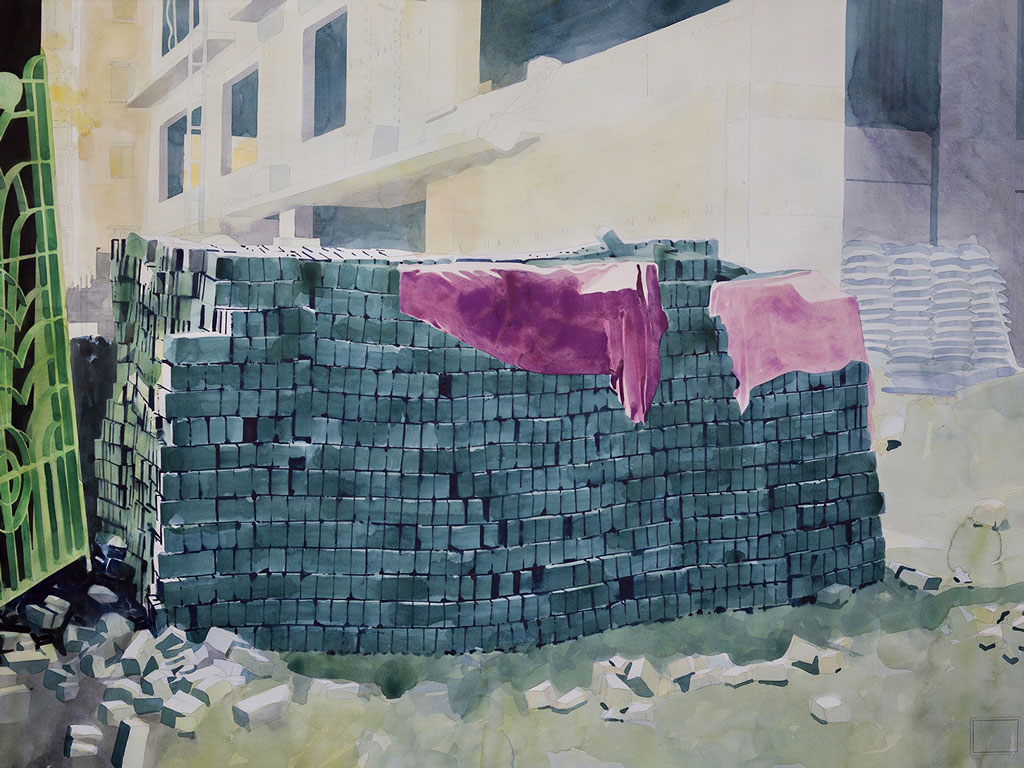 Yvan Salomone’s solo exhibition “Au-dessous du barrage” features an ensemble of recent watercolours, together with a selection of painted photographs rarely shown in the past. Painted and drawn over, scratched (etc.), these small-format pictures remind us of the importance of photography as a starting point in the artist’s work. They introduce, in a more intimate register, twenty watercolours of a similar large format, using bright colors. Yvan Salomone is one of the few artists who currently bases his work on the intuition of a deep kinship between the two techniques (painting and photography). Oil, bitumen and turpentine, which were the basis for so-called plenary painting, are often coating materials, whereas watercolour can be light blood or tear water, as is the revealing bath of traditional photography, which August Strindberg liked to compare to the sea, full of sodium chloride, sulfates and magnesium. Watercolour is a very demanding medium, which requires technical mastery but also respect for accidents, patience. Each plate has an immatriculation number, or an inventory number, a title made up of eleven letters, often a portmanteau word that Salomone, an avid reader of Finnegans Wake and Ulysses, is fond of, and is accompanied, practically in secret, not by a caption or comment, but by a secular prayer, as beautiful as it is hermetic. Info: Xippas Gallery, 108, rue Vieille du Temple, Paris, Duration: 7/9-5/10/19, Days & Hours: Tue-Fri 10:00-13:00 & 14:00-19:00. Sat 10:00-19:00, www.xippas.com
Yvan Salomone’s solo exhibition “Au-dessous du barrage” features an ensemble of recent watercolours, together with a selection of painted photographs rarely shown in the past. Painted and drawn over, scratched (etc.), these small-format pictures remind us of the importance of photography as a starting point in the artist’s work. They introduce, in a more intimate register, twenty watercolours of a similar large format, using bright colors. Yvan Salomone is one of the few artists who currently bases his work on the intuition of a deep kinship between the two techniques (painting and photography). Oil, bitumen and turpentine, which were the basis for so-called plenary painting, are often coating materials, whereas watercolour can be light blood or tear water, as is the revealing bath of traditional photography, which August Strindberg liked to compare to the sea, full of sodium chloride, sulfates and magnesium. Watercolour is a very demanding medium, which requires technical mastery but also respect for accidents, patience. Each plate has an immatriculation number, or an inventory number, a title made up of eleven letters, often a portmanteau word that Salomone, an avid reader of Finnegans Wake and Ulysses, is fond of, and is accompanied, practically in secret, not by a caption or comment, but by a secular prayer, as beautiful as it is hermetic. Info: Xippas Gallery, 108, rue Vieille du Temple, Paris, Duration: 7/9-5/10/19, Days & Hours: Tue-Fri 10:00-13:00 & 14:00-19:00. Sat 10:00-19:00, www.xippas.com
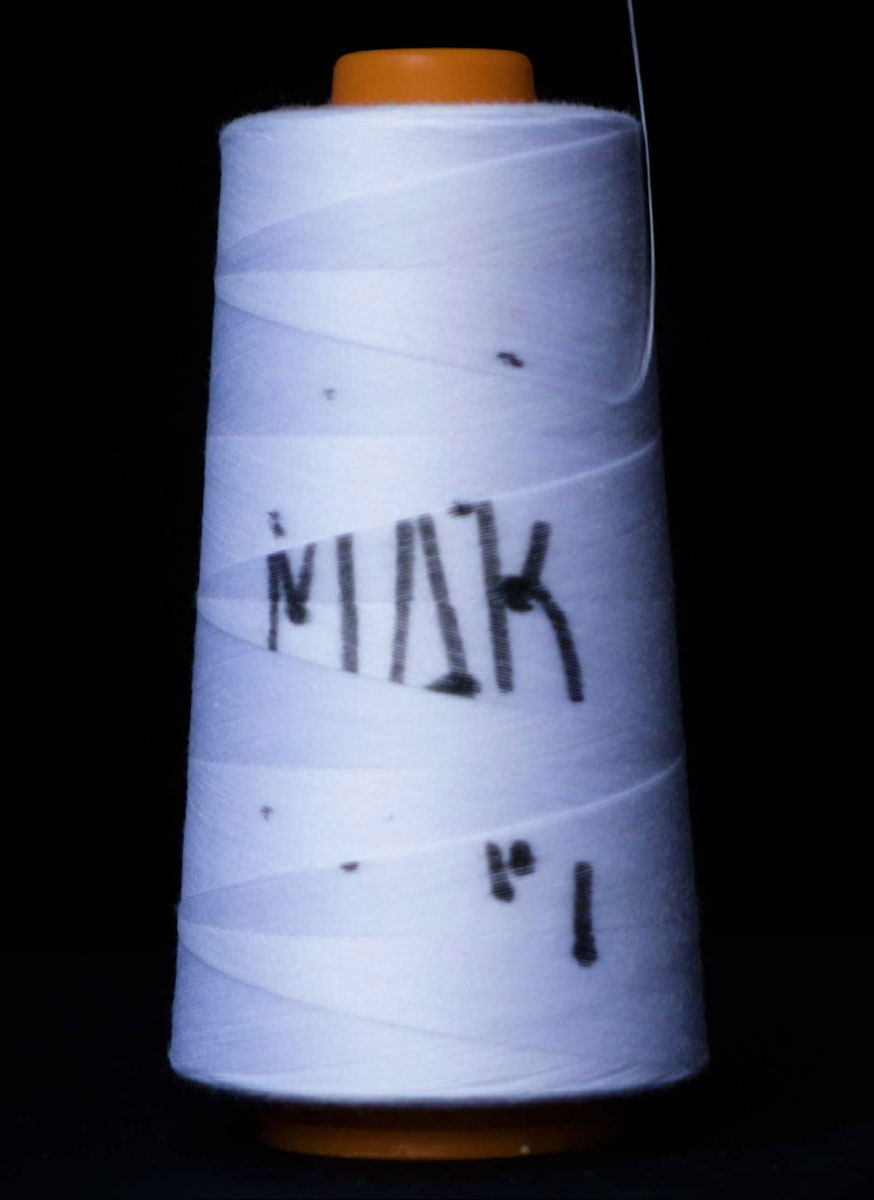 The works in Enrique Ramírez’s solo exhibition “Mar mAr maR” draw a map whose outlines are inspired by the upside-down map (America Invertida, 1943) drawn by the Uruguayan painter Joaquin Torres Garcia. This illustration of South America upside-down has become a symbol of the efforts made by this continent to assert its central place. Joaquin put the South Pole at the top of the earth, like a visual statement of the importance of South America, offering another vision of the world and not the vision that the rest of the world tries to impose on South America. The title of the exhibition is a repetition but also an act of resistance. It symbolizes the world’s resilience. “Mar mAr maR” is not just the sea, in the literal sense, but you, me, the other, the friend, the stranger, the “other” world which the media are abandoning for lack of interest, it’s the immigrant, the displaced person, the wrecked ship, it’s the silent complaint of the earth when it meets the sea. Enrique Ramírez’s work combines video, photography, installations and poetic narratives. He was born in 1979 in Santiago, Chile, and has since 2007 lived and worked between Paris and Santiago. In 2014, he won the Discovery Prize of Les Amis du Palais de Tokyo in Paris. He is invited to the 57th International Art Exhibition – La Biennale di Venezia curated by Christine Macel. He is a graduate from Le Fresnoy Studio National des Arts Contemporains in Tourcoing, France. Info: Michel Rein Gallery, 42 rue de Turenne, Paris, Duration: 7/9-29/10/19, Days & Hours: Tue-Sat 11:00-19:00, http://michelrein.com
The works in Enrique Ramírez’s solo exhibition “Mar mAr maR” draw a map whose outlines are inspired by the upside-down map (America Invertida, 1943) drawn by the Uruguayan painter Joaquin Torres Garcia. This illustration of South America upside-down has become a symbol of the efforts made by this continent to assert its central place. Joaquin put the South Pole at the top of the earth, like a visual statement of the importance of South America, offering another vision of the world and not the vision that the rest of the world tries to impose on South America. The title of the exhibition is a repetition but also an act of resistance. It symbolizes the world’s resilience. “Mar mAr maR” is not just the sea, in the literal sense, but you, me, the other, the friend, the stranger, the “other” world which the media are abandoning for lack of interest, it’s the immigrant, the displaced person, the wrecked ship, it’s the silent complaint of the earth when it meets the sea. Enrique Ramírez’s work combines video, photography, installations and poetic narratives. He was born in 1979 in Santiago, Chile, and has since 2007 lived and worked between Paris and Santiago. In 2014, he won the Discovery Prize of Les Amis du Palais de Tokyo in Paris. He is invited to the 57th International Art Exhibition – La Biennale di Venezia curated by Christine Macel. He is a graduate from Le Fresnoy Studio National des Arts Contemporains in Tourcoing, France. Info: Michel Rein Gallery, 42 rue de Turenne, Paris, Duration: 7/9-29/10/19, Days & Hours: Tue-Sat 11:00-19:00, http://michelrein.com
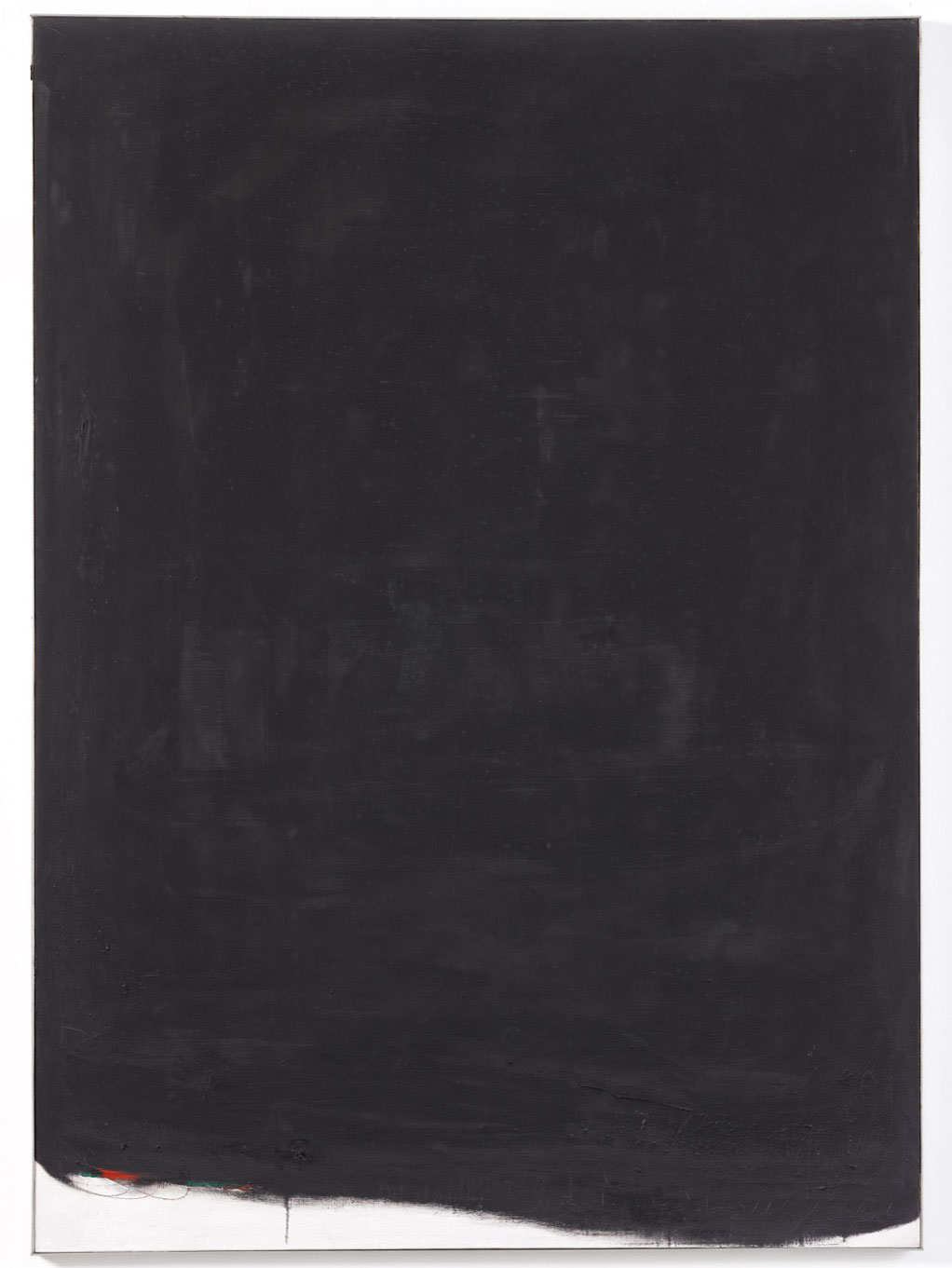 Early works by Arnulf Rainer is on presentation at Galerie Thaddaeus Ropac. The Austrian artist is regarded as a pioneer of Art Informel, a movement which brought an intuitive form of lyrical expression in the field of abstraction. The exhibition will bring together Arnulf Rainer’s “Red and Black Overpaintings” dating from 1953 to 1969, and a selection of the artist’s seminal “Proportion Studies”, a series of works on paper from the early and mid-1950s. Spanning the three floors of the Marais gallery, the exhibition provides precious insight into the artist’s distinctive approach to abstraction, from the mathematical rigour of the Proportion Studies to the emotional subjectivity of his “Overpaintings”. Arnulf Rainer’s early body of work places him in a singular position, at the crossroads of many influences, from Surrealism to Minimalism and Abstract Expressionism. In the 1950s, Rainer developed his Overpaintings series, influenced by the surrealist principle of écriture automatique. He started to work on this series in 1952 after a trip to Paris, together with fellow Austrian artist Maria Lassnig, where he visited the German speaking poet Paul Celan (b. 1920, Cernăui, formerly Romania – d. 1970, Paris), whom he greatly admired. At the time of his visit, Celan was translating into German A Short History of Decay (1949), a book by the Romanian philosopher Emil M. Cioran that influenced Rainer’s later practice. Info: Galerie Thaddaeus Ropac, 7 rue Debelleyme, Paris, Duration: 7/9-12/10/19, Days & Hours: Tue-Sat 10:00-19:00, www.ropac.net
Early works by Arnulf Rainer is on presentation at Galerie Thaddaeus Ropac. The Austrian artist is regarded as a pioneer of Art Informel, a movement which brought an intuitive form of lyrical expression in the field of abstraction. The exhibition will bring together Arnulf Rainer’s “Red and Black Overpaintings” dating from 1953 to 1969, and a selection of the artist’s seminal “Proportion Studies”, a series of works on paper from the early and mid-1950s. Spanning the three floors of the Marais gallery, the exhibition provides precious insight into the artist’s distinctive approach to abstraction, from the mathematical rigour of the Proportion Studies to the emotional subjectivity of his “Overpaintings”. Arnulf Rainer’s early body of work places him in a singular position, at the crossroads of many influences, from Surrealism to Minimalism and Abstract Expressionism. In the 1950s, Rainer developed his Overpaintings series, influenced by the surrealist principle of écriture automatique. He started to work on this series in 1952 after a trip to Paris, together with fellow Austrian artist Maria Lassnig, where he visited the German speaking poet Paul Celan (b. 1920, Cernăui, formerly Romania – d. 1970, Paris), whom he greatly admired. At the time of his visit, Celan was translating into German A Short History of Decay (1949), a book by the Romanian philosopher Emil M. Cioran that influenced Rainer’s later practice. Info: Galerie Thaddaeus Ropac, 7 rue Debelleyme, Paris, Duration: 7/9-12/10/19, Days & Hours: Tue-Sat 10:00-19:00, www.ropac.net
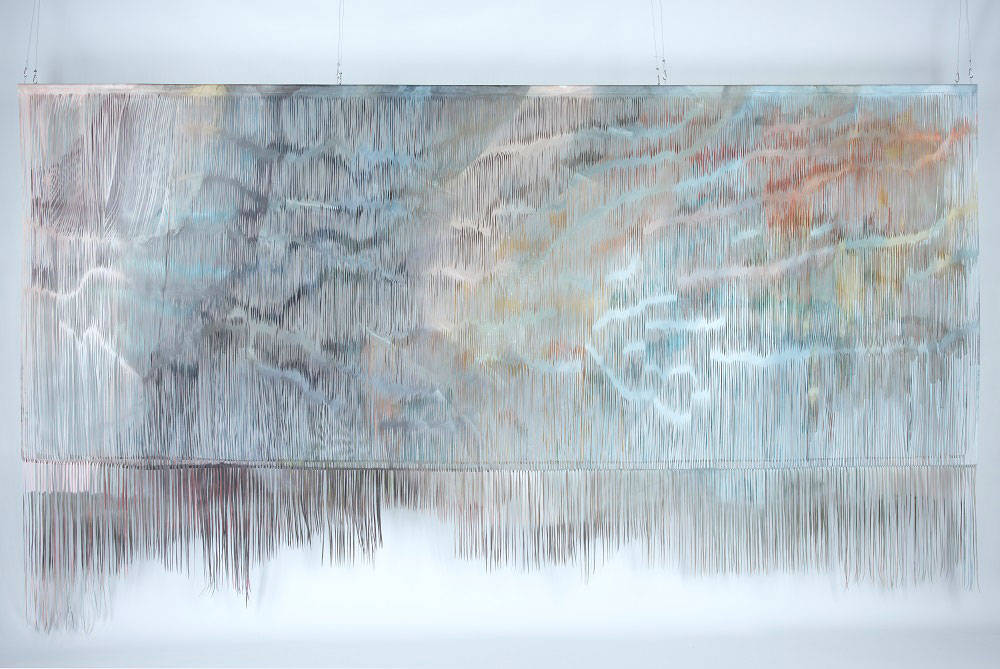 Georgia Russell’s new solo exhibition features 20 previously unseen works. Georgia Russell’s adventures with the scalpel began almost twenty years ago when she began overlapping cut- outs of photographs to create images within images. Next, eviscerated old books were fashioned into totem- like sculptures. It has only been since 2015 that paper has yielded to canvas; and the artist undertook her current and ever-changing pictorial endeavours. Whereas in previous works on canvas an iridescent palette blended into complex cut-out work entailing kinetic optical elements. Today, a yearning for simplicity guides the artist’s choices. The paintings have become almost monochromatic, favouring green, blue, grey hues; hinging around various nuances achieved by using highly diluted pictorial materials (acrylic and gouache). A similar wake of simplification seems to have prompted the quasi elimination of any further pieces under Plexiglas, in favour of those set in a metal frame instead – thus establishing a more direct rapport between the piece and the onlooker. While works done in the past using cut-out and assembly techniques were sculptural and strove for 3-dimensional effect using layers of paper or canvas – her new cut-out pieces look more pictorial. Similar to architectural styles across the Arab world wherein windows are cut into walls (mashrabiya), the main focus here being the relationship between the whole flat surface of the canvas (opaque and stiff) and the empty spaces made by rhythmical graphic incisions. Info: Galerie Karsten Greve, 5, rue Debelleyme, Paris, Duration: 14/9-26/10/19, Days & Hours: Tue-Sat 10:00-19:00, www.galerie-karsten-greve.com
Georgia Russell’s new solo exhibition features 20 previously unseen works. Georgia Russell’s adventures with the scalpel began almost twenty years ago when she began overlapping cut- outs of photographs to create images within images. Next, eviscerated old books were fashioned into totem- like sculptures. It has only been since 2015 that paper has yielded to canvas; and the artist undertook her current and ever-changing pictorial endeavours. Whereas in previous works on canvas an iridescent palette blended into complex cut-out work entailing kinetic optical elements. Today, a yearning for simplicity guides the artist’s choices. The paintings have become almost monochromatic, favouring green, blue, grey hues; hinging around various nuances achieved by using highly diluted pictorial materials (acrylic and gouache). A similar wake of simplification seems to have prompted the quasi elimination of any further pieces under Plexiglas, in favour of those set in a metal frame instead – thus establishing a more direct rapport between the piece and the onlooker. While works done in the past using cut-out and assembly techniques were sculptural and strove for 3-dimensional effect using layers of paper or canvas – her new cut-out pieces look more pictorial. Similar to architectural styles across the Arab world wherein windows are cut into walls (mashrabiya), the main focus here being the relationship between the whole flat surface of the canvas (opaque and stiff) and the empty spaces made by rhythmical graphic incisions. Info: Galerie Karsten Greve, 5, rue Debelleyme, Paris, Duration: 14/9-26/10/19, Days & Hours: Tue-Sat 10:00-19:00, www.galerie-karsten-greve.com
